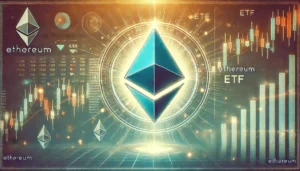Tokenization of the financing of industrial goods
4 min readTable of Contents
Direct investments in individual machines and production lines enable industrial companies to use new financing methods and open up interesting investments for investors.
Tokenization simplifies the transfer of and investment in previously illiquid assets and increases market efficiency
Tokenization has transformative potential for the economy and society. Tokenization opens up new financing methods and business models for companies. A large number of new investment opportunities are opening up for investors, as tokenization can create liquid markets for assets that were previously difficult to transfer. This opens up new opportunities for portfolio diversification. For example, an investor could easily acquire a fragment of a tokenized item. It also accelerates innovation and growth as investors can invest directly in the development of new technologies and manufacturing facilities.
In addition to new investment opportunities, tokenization also leads to a simpler investment process, as the transfer via the blockchain potentially makes many intermediaries obsolete. The direct token transfer reduces the transaction costs incurred, which leads to more efficient market results.
Tokenization is the digital mapping of assets
In the course of the increasing digitalization of our society, the process of tokenization plays an important role. The term tokenization is closely linked to blockchain technology and describes the digital mapping of physical and non-physical assets with digital tokens. Nowadays, this digital mapping is usually carried out on a blockchain. Specifically, a corresponding token is issued on the blockchain, which represents the corresponding asset – one could also speak of a digital securitization of assets.
Concrete use case for financing industrial capital goods
Together with Bosch, Daimler Mobility, the University of Stuttgart and the technology partner 51nodes, the Stuttgart Stock Exchange has developed and tested a flexible financing method for industrial capital goods based on the blockchain as part of a basic project.
With the new method, investors can use digital tokens to invest in industrial capital goods such as machines, vehicle fleets or energy infrastructure. On the other hand, the token issuer has the advantage of linking its financing costs to the actual use of the financed goods according to a pay-per-use model. The provision of relevant usage data creates transparency and forms the basis for variable payments to investors. The ETH blockchain was chosen as the technical basis for the project.
Tokenization process includes token generation, token sale, token transfer and distribution
The value chain of the tokenization of industrial goods financing comprises, in simplified form, the following stages:
- The first step is token generation. In addition to the development of the financing or Investment Smart Contracts combine this with the data of the industrial good to be financed and a pay-per-use / payout algorithm.
- The second step is the token sale. After the token has been generated, the token is sold for the first time on a primary market platform and then traded on a secondary market platform. In this context, the fundamental question of the safekeeping of the tokens must be taken into account.
- The third step is the token transfer. In addition to the transfer, i.e. trading on a secondary market platform, a regulatory / legally compliant process of transferability to external addresses (e.g. the private wallet of the investor) must be set up.
- The fourth step is the distribution. Information about the actual use of the industrial good is “translated” into distribution amounts at defined intervals using the stored pay-per-use / payout algorithm and transferred to the holder of the investment token.
Challenges at the technological, regulatory and product level
While simple pay-per-use products for corporate financing were developed for the first time in 2018, the project presented uses the disruptive potential of blockchain technology for the first time. This makes the entire investment and distribution process more efficient and faster, as the often complex route via intermediaries becomes superfluous or can run fully automatically. But it is also true that there are challenges for the broad applicability of the project result in practice.
From a technical point of view, it must be possible to digitally map the entire value chain from token generation to distribution. There is therefore a need for a “recognized” stablecoin or digital central bank currency, which does not (yet) exist today, particularly in the context of distributions. Only with these, however, can the efficiency potential be fully increased. In addition, there is a need for clear regulations with regard to the issuance of tokenized securities. On the product side, the central challenge is the scaling of the marketplace, without which the necessary platform cannot be operated economically. To do this, a sufficient number of issuers and investors must be convinced.
Dr. Ulli Spankowski is the managing director of Boerse Stuttgart Digital Ventures GmbH.







